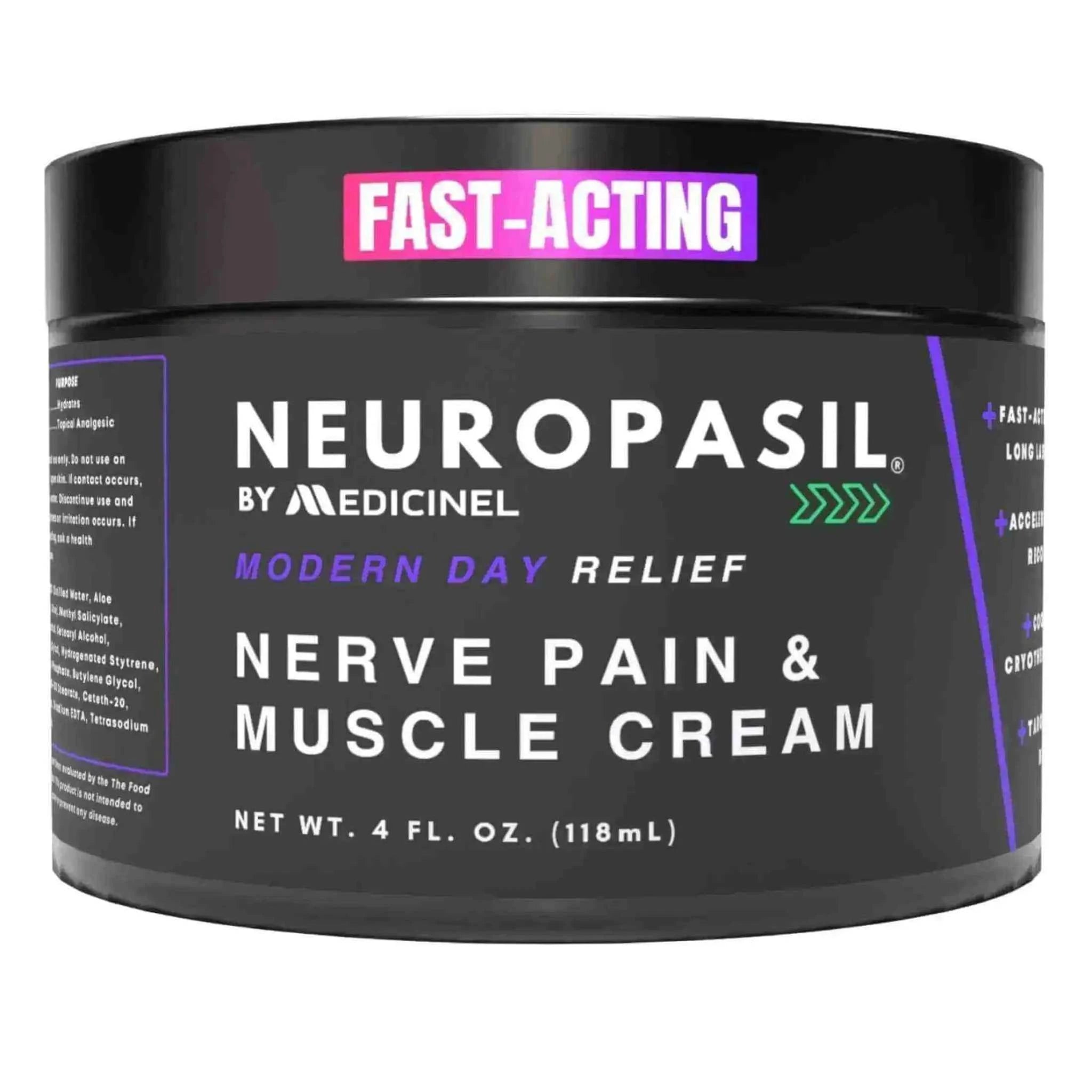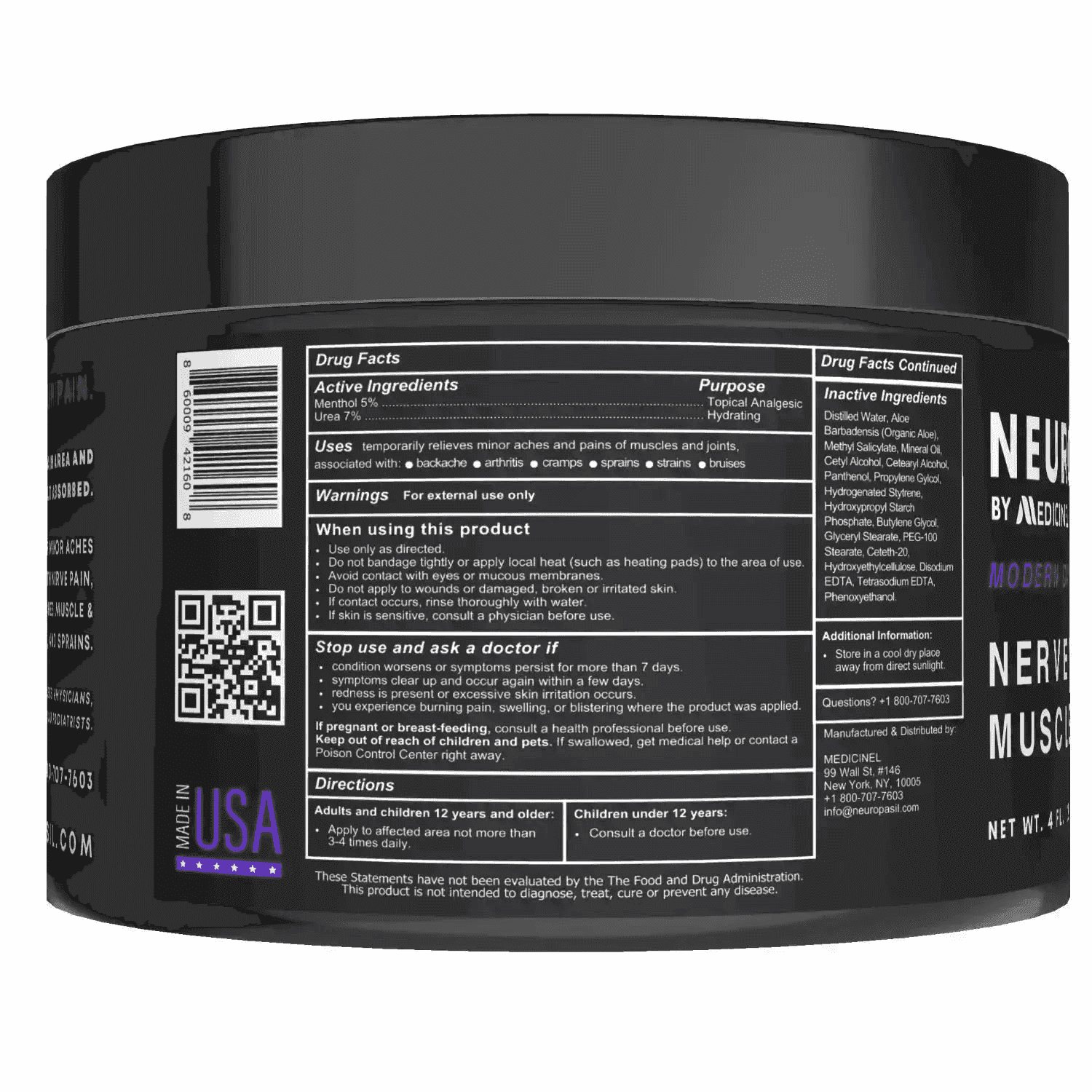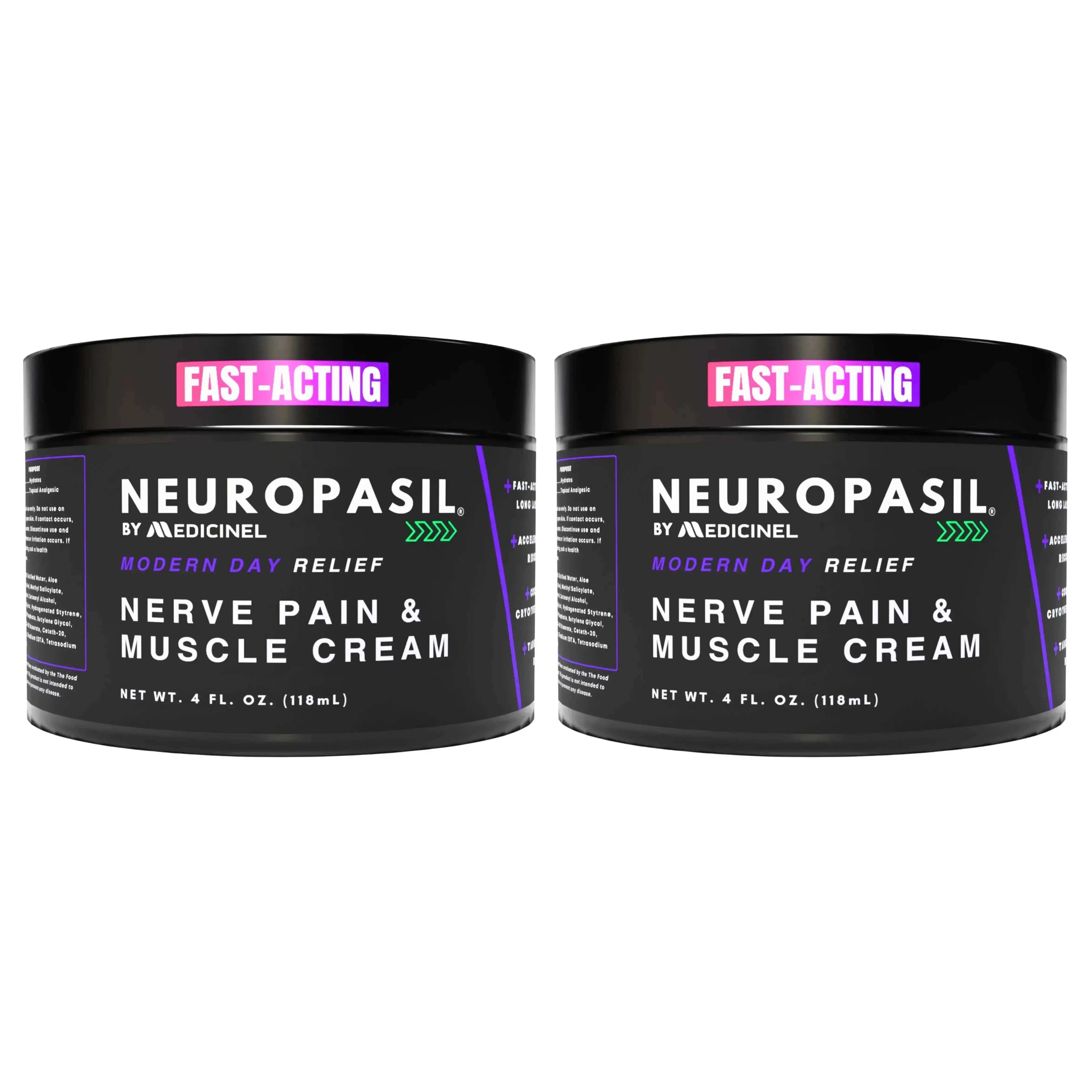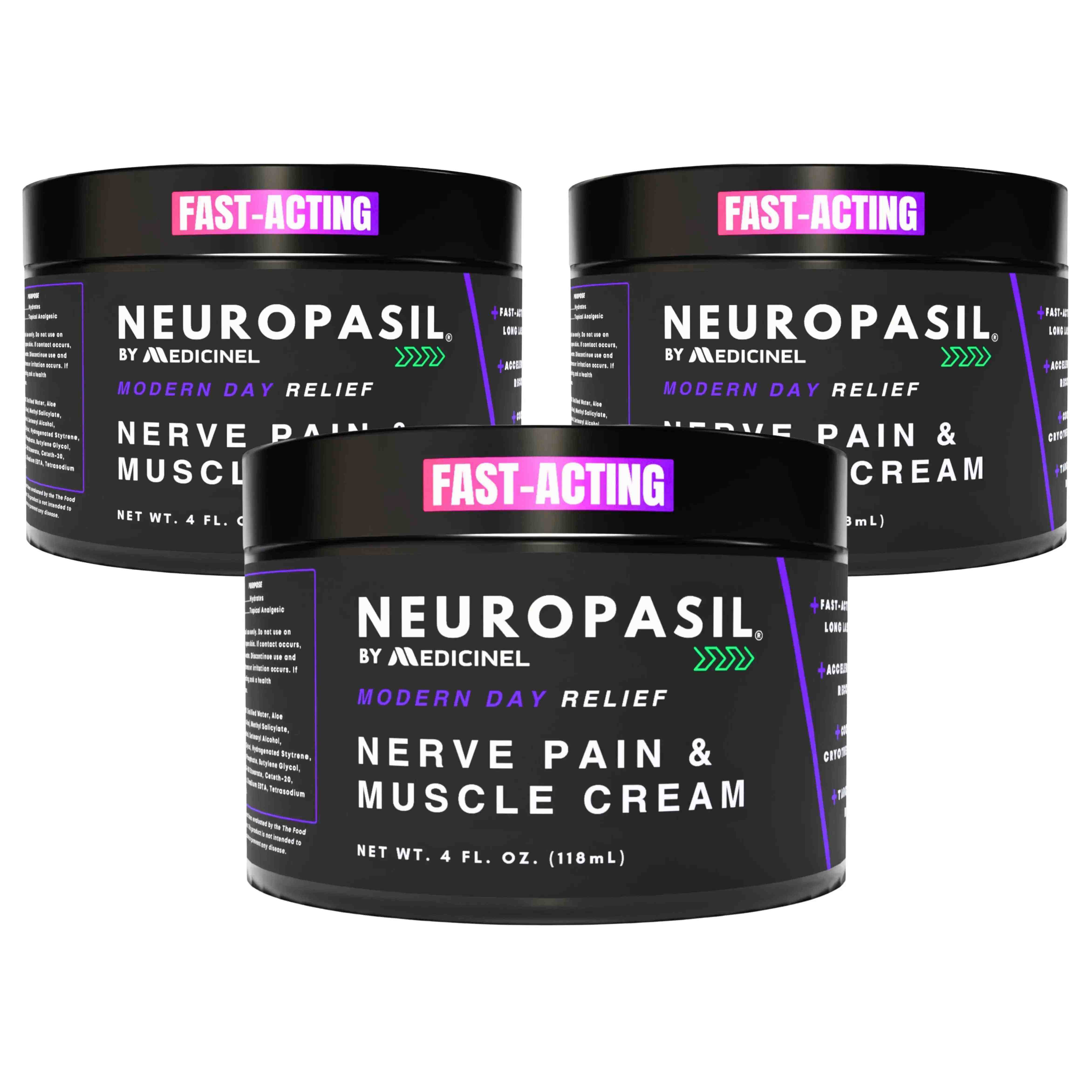Understanding Sciatica: The Pain That Affects Millions

Sciatica pain relief begins with understanding the condition. Sciatica is pain that radiates along the sciatic nerve, which runs from your lower back, through your hips and buttocks, and down each leg.
Quick relief options for sciatica pain:
- Apply cold packs for 15-20 minutes during the first 48 hours
- Switch to heat therapy after initial inflammation subsides
- Take gentle walks instead of prolonged bed rest
- Try knee-to-chest stretches
- Use over-the-counter NSAIDs like ibuprofen
- Consider topical nerve relief creams
This pain can range from a mild ache to sharp, burning sensations. Research shows that as many as 4 out of every 10 people will experience sciatica in their lifetime.
The good news is that about 90% of people with sciatica get better without surgery, often within a few weeks with the right home care. The five simple steps we'll cover can help you find relief, from immediate pain management to targeted stretches that address the root cause.

Step 1: Understand Your Sciatica – Causes and Symptoms
Effective sciatica pain relief starts with knowing what's causing it. Sciatica (also called lumbar radiculopathy) is a signal that something is compressing or irritating your sciatic nerve, the longest nerve in your body.
Herniated discs are the most common cause, occurring when the soft cushions between your vertebrae press on the nerve. Other causes include:
- Spinal stenosis: A narrowing of the spinal canal.
- Piriformis syndrome: A muscle in the buttock spasms and squeezes the sciatic nerve.
- Degenerative disc disease: The natural wear and tear of spinal discs over time.
- Pregnancy: The weight of the baby and hormonal changes can put pressure on the nerve, though this usually resolves after delivery.
For more information on nerve pain, see our guide on nerve pain.
Common Symptoms of Sciatica
Sciatica symptoms typically follow the path of the nerve:
- Radiating pain: A shooting pain that travels from your lower back, through your buttock, and down the back of one leg.
- Numbness and tingling: A "pins-and-needles" sensation along the nerve's path.
- Muscle weakness: The affected leg may feel unstable or weak.
- One-sided problem: Sciatica usually affects only one leg at a time.
- Pain that worsens with sitting: Many find relief from walking or lying down.
What Causes the Pain?
The pain stems from pressure and inflammation. When a herniated disc, bone spur, or other issue compresses the sciatic nerve root, it triggers irritation and an inflammatory response, creating a cycle of pain and swelling.
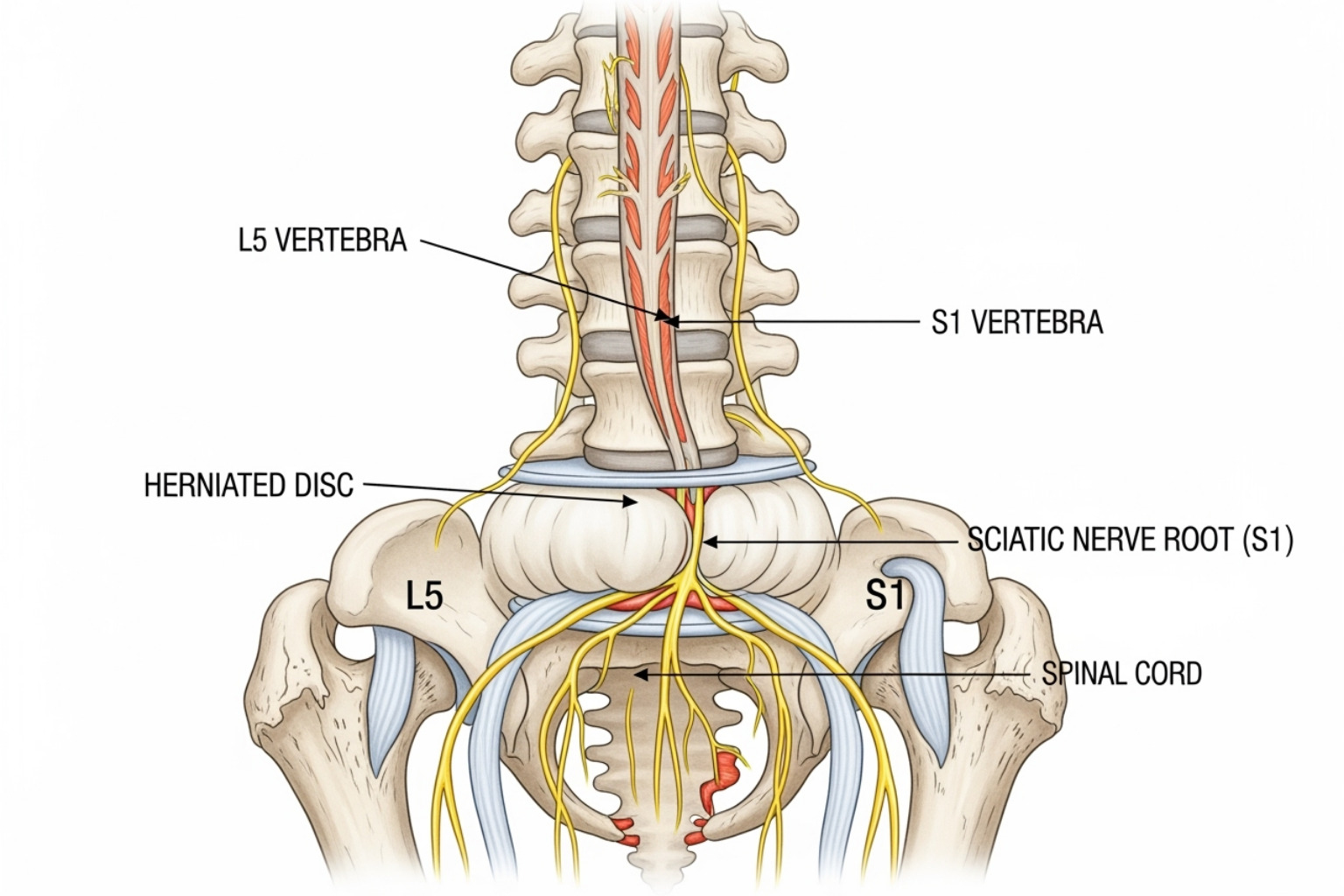
Understanding these causes is the first step toward taking targeted action for relief.
Step 2: Find Immediate Relief at Home
When sciatica strikes, you want immediate relief. Fortunately, several effective home strategies can help you feel better quickly.
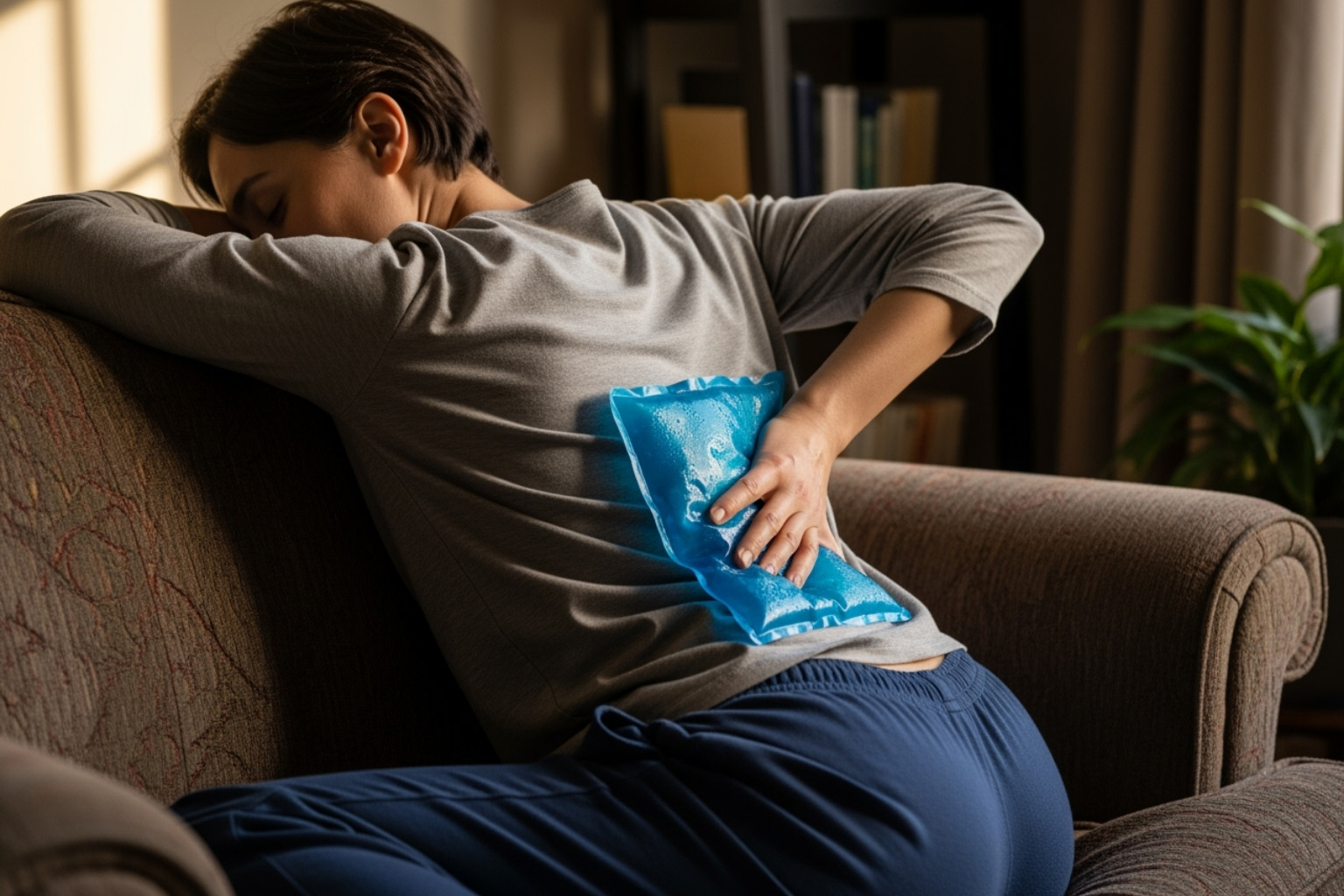
Effective Home Remedies for Sciatica Pain Relief
- Cold Packs: For the first 48 hours, apply an ice pack wrapped in a towel to the painful area for 15-20 minutes at a time to reduce inflammation.
- Heat Therapy: After 48 hours, switch to a heating pad or warm bath for 20-minute intervals to relax tense muscles and improve blood flow. You can also alternate between hot and cold.
- Over-the-Counter (OTC) NSAIDs: Drugs like ibuprofen (Advil) or naproxen sodium (Aleve) can reduce pain and inflammation. Use as directed.
- Proper Posture: Sit in chairs with good lumbar support and keep your feet flat on the floor to alleviate pressure on the nerve.
- Hydration: Staying hydrated helps keep spinal discs elastic. Aim for 8 glasses of water daily.
- Neuropasil Nerve Relief Cream: For targeted relief, a cream like Neuropasil can soothe nerve pain and muscle discomfort directly at the source. Find natural solutions for nerve pain and get 25% off your order.
The Importance of Movement vs. Bed Rest
While it may seem counter-intuitive, gentle movement is often better than prolonged bed rest for sciatica. As Harvard Health notes, staying inactive can weaken back muscles, making the problem worse. Bed rest for back pain? A little bit will do you | Harvard.
Movement helps by:
- Strengthening core and back muscles.
- Improving flexibility and range of motion.
- Boosting blood flow to the affected area.
Instead of staying in bed, try short walks or light stretching. If movement worsens the pain, consult a doctor, but for most people, staying active is key to a faster recovery. For more tips, see our article on relieving muscle aches with activity.
Step 3: Use Targeted Stretches and Exercises
Once you've managed the initial pain, targeted stretches and exercises are your next step for sciatica pain relief. These movements help build core stability and flexibility to support your spine and prevent future issues. They are designed to gently decompress the nerve and reduce muscle tension, an approach supported by research on self-mobilization techniques for the sciatic nerves.
Listen to your body: a gentle stretch is good, but sharp pain is a signal to stop.
4 Key Stretches for Sciatica
-
Knee-to-Chest Stretch: Lie on your back with knees bent. Gently pull one knee to your chest, hold for 20-30 seconds, and repeat 2-3 times on each side. This decompresses your lower back.

-
Seated Piriformis Stretch: While seated, cross the ankle of your affected leg over the opposite knee. Lean forward with a straight back until you feel a stretch in your buttock. Hold for 20-30 seconds and repeat up to 5 times per side.
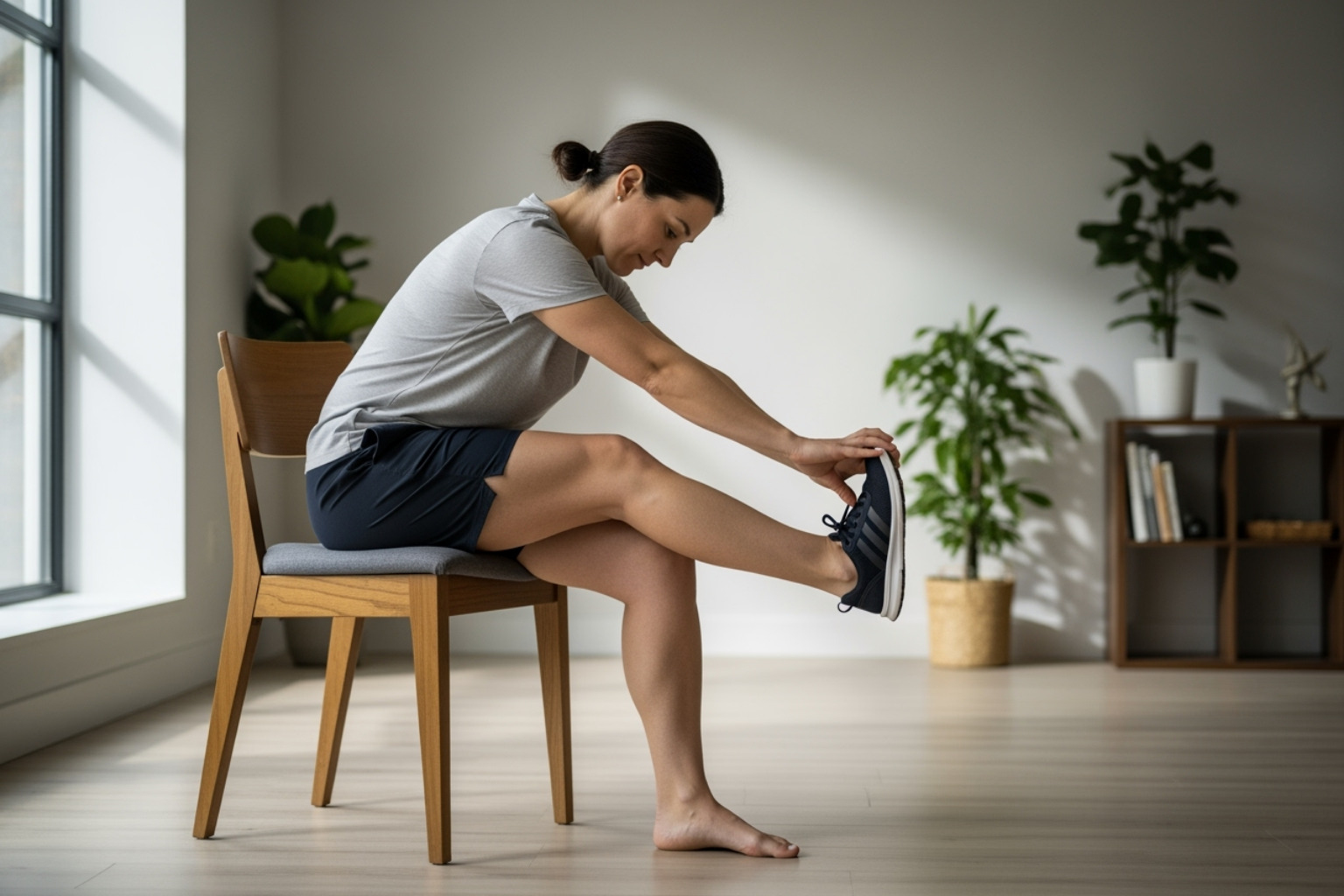
-
Cat-Cow Pose: On your hands and knees, inhale as you arch your back (Cow), then exhale as you round your spine (Cat). Flow between the two poses for 10-15 repetitions to improve spinal mobility.

-
Hamstring Stretch: Lie on your back and loop a towel around one foot. Gently pull the leg up, keeping it straight, until you feel a stretch. Hold for 20-30 seconds and repeat 2-3 times per side.

Low-Impact Exercises to Support Your Spine
Building strength is crucial for long-term relief. Try these low-impact exercises:
- Walking: Encourages blood flow and keeps the spine mobile. Start with 10-15 minutes and gradually increase.
- Swimming/Water Aerobics: The water's buoyancy supports your spine while you build strength and flexibility.
- Yoga: Gentle or restorative yoga improves flexibility and strength. Modify poses as needed.
- Core Exercises: A strong core acts as a natural back brace. Try planks (holding a straight line from head to heels) and bridges (lying on your back and lifting your hips).
Consistency is key. Start slowly and build these exercises into your routine for lasting results.
Step 4: Explore Supportive and Natural Approaches
Combining multiple gentle approaches can improve your sciatica pain relief. These natural methods work alongside your stretches and home remedies, addressing factors like stress and inflammation to support your body's healing process.
Natural and Supportive Methods for Sciatica Relief
- Targeted Topical Relief: Our Neuropasil nerve relief cream is designed to deliver soothing ingredients directly to the painful area, providing comfort right where you need it.
- Self-Massage: Use your hands or a foam roller to gently work on the muscles in your lower back, hips, and glutes. Releasing tension in the piriformis muscle can be particularly helpful.
- Mind-Body Techniques: Stress can worsen pain. Simple mindfulness, deep breathing, or meditation can calm your nervous system and reduce your perception of pain.
- Epsom Salt Bath: A warm bath with Epsom salts combines heat with the anti-inflammatory properties of magnesium to relax tense muscles and soothe irritated nerves.
- Ergonomic Adjustments: Use a chair with good lumbar support or a rolled towel behind your lower back. Supportive cushions and standing desks can also prevent flare-ups.
- Alternative Therapies: Some people find relief from acupuncture, chiropractic care, or professional massage therapy.
| Method | Goals | Approach |
|---|---|---|
| Home Exercise | Strengthen core, improve flexibility, reduce nerve pressure | Targeted stretches, low-impact activities, consistent daily movement |
| Topical Relief | Direct pain relief, reduce inflammation at source | Nerve relief creams like Neuropasil, heat/cold therapy, gentle massage |
| Relaxation | Lower stress hormones, reduce pain perception, calm nervous system | Mindfulness, breathing exercises, warm baths, ergonomic improvements |
Success with these approaches comes from consistency. Pick one or two methods that feel right for you and integrate them into your routine. They work best when combined with the movement and stretching covered in Step 3, creating a comprehensive sciatica pain relief toolkit.
Step 5: Know When to See a Doctor and Prevent Flare-Ups
While most sciatica resolves with home care, it's crucial to know when to seek professional medical help. Understanding these signs and focusing on prevention can ensure a safe and effective recovery.
Red Flag Symptoms: When to Seek Immediate Medical Help
Seek immediate medical attention if you experience any of the following:
- Loss of bladder or bowel control: This could indicate a serious condition called cauda equina syndrome.
- Significant leg weakness or difficulty lifting your foot.
- Numbness in the "saddle area" (inner thighs, back of legs, and around the rectum).
- Severe pain that doesn't improve or worsens despite home treatment.
Your doctor may use X-rays, an MRI, or an EMG test to diagnose the cause and prevent complications like permanent nerve damage.
Lifestyle Changes for Long-Term Sciatica Pain Relief
Preventing future flare-ups is the best strategy. Small daily changes can significantly reduce your risk:
- Maintain a healthy weight to reduce pressure on your spine.
- Use ergonomic furniture, especially a chair with good lumbar support, and take regular breaks from sitting.
- Practice proper lifting techniques: Always bend at your knees, not your waist, and keep heavy objects close to your body.
- Quit smoking, as nicotine can impair blood flow to spinal discs, hindering their ability to heal.
- Manage stress through techniques like meditation or deep breathing to reduce muscle tension.
- Exercise regularly with activities like walking or swimming to keep your core strong and your spine flexible.
Step 9: How Long Does It Typically Take to Recover from Sciatica?
Here's encouraging news for your sciatica pain relief journey: most cases resolve relatively quickly. About 90% of people get better without surgery, often within four to six weeks of consistent home care.
Your personal recovery timeline depends on the severity of the nerve compression, the underlying cause, and your commitment to treatment. Early intervention is key; starting stretches and gentle activity soon after symptoms appear can prevent the issue from becoming chronic.
While some complex cases may take several months to resolve, patience and proactive management are your best strategy. Your body has a remarkable ability to heal when given the right support.
Step 10: Lifestyle Changes for Long-Term Sciatica Management or Prevention
Once you've found sciatica pain relief, the goal is to prevent the pain from returning. Adopting healthy habits is your best insurance policy against future flare-ups.
Key lifestyle changes include:
- Maintaining a healthy weight to reduce stress on your spine.
- Using ergonomic furniture and taking frequent breaks from sitting.
- Lifting heavy objects correctly by bending at your knees, not your waist.
- Quitting smoking to improve blood flow and healing in your spinal discs.
- Managing stress to prevent muscle tension that can irritate the sciatic nerve.
- Exercising regularly to keep your core strong and your back flexible.
Making these changes part of your daily routine is the foundation of long-term spinal health and lasting relief.
Frequently Asked Questions about Sciatica
We know that finding sciatica pain relief can bring up many questions. Here are answers to some of the most common concerns.
How long does it typically take to recover from sciatica?
Most people recover faster than they expect. About 90% of individuals see significant improvement within four to six weeks with consistent home care, including gentle movement and stretching. The exact timeline depends on the severity of the nerve compression and the underlying cause. Starting treatment early is key to a speedy recovery.
What is the best sleeping position for sciatica pain?
The goal is to keep your spine in a neutral position.
- Side sleepers: Place a firm pillow between your knees to align your hips, pelvis, and spine.
- Back sleepers: Place a pillow under your knees to maintain your lower back's natural curve.
Avoid sleeping on your stomach, as it can strain your spine and neck, worsening the pain.
Will sciatica go away on its own?
In many cases, yes—but it requires your help. While about 90% of people get better without surgery, "going away on its own" relies on active self-care. This means consistently applying ice or heat, taking gentle walks, and performing targeted stretches.
This proactive approach supports your body's natural healing process. However, if you experience severe, worsening symptoms or any of the red flags mentioned earlier (like loss of bladder control), seek immediate medical help. For most, combining patience with proactive care, including supportive treatments like Neuropasil nerve relief cream, is the best path to recovery.
Conclusion
Dealing with sciatica doesn't mean living with constant pain. This guide has provided practical, achievable steps for sciatica pain relief that you can start today.
Our five steps offer a complete approach:
- Understand your sciatica to make smart choices.
- Find immediate relief to stay comfortable and active.
- Use targeted stretches and exercises to address the root cause.
- Explore supportive approaches to complement your efforts.
- Know when to see a doctor to ensure a safe recovery.
The journey to comfort takes time, and consistency is more important than perfection. Small, daily efforts—like a morning stretch or applying heat after a long day—add up to significant improvements.
Your body has an amazing ability to heal. With patience, the right approach, and supportive products like our Neuropasil nerve relief cream, you can find your way back to a pain-free life.
Ready to take the next step? Find natural solutions for nerve pain and get 25% off your order and experience how the right sciatica pain relief approach can transform your daily life.










